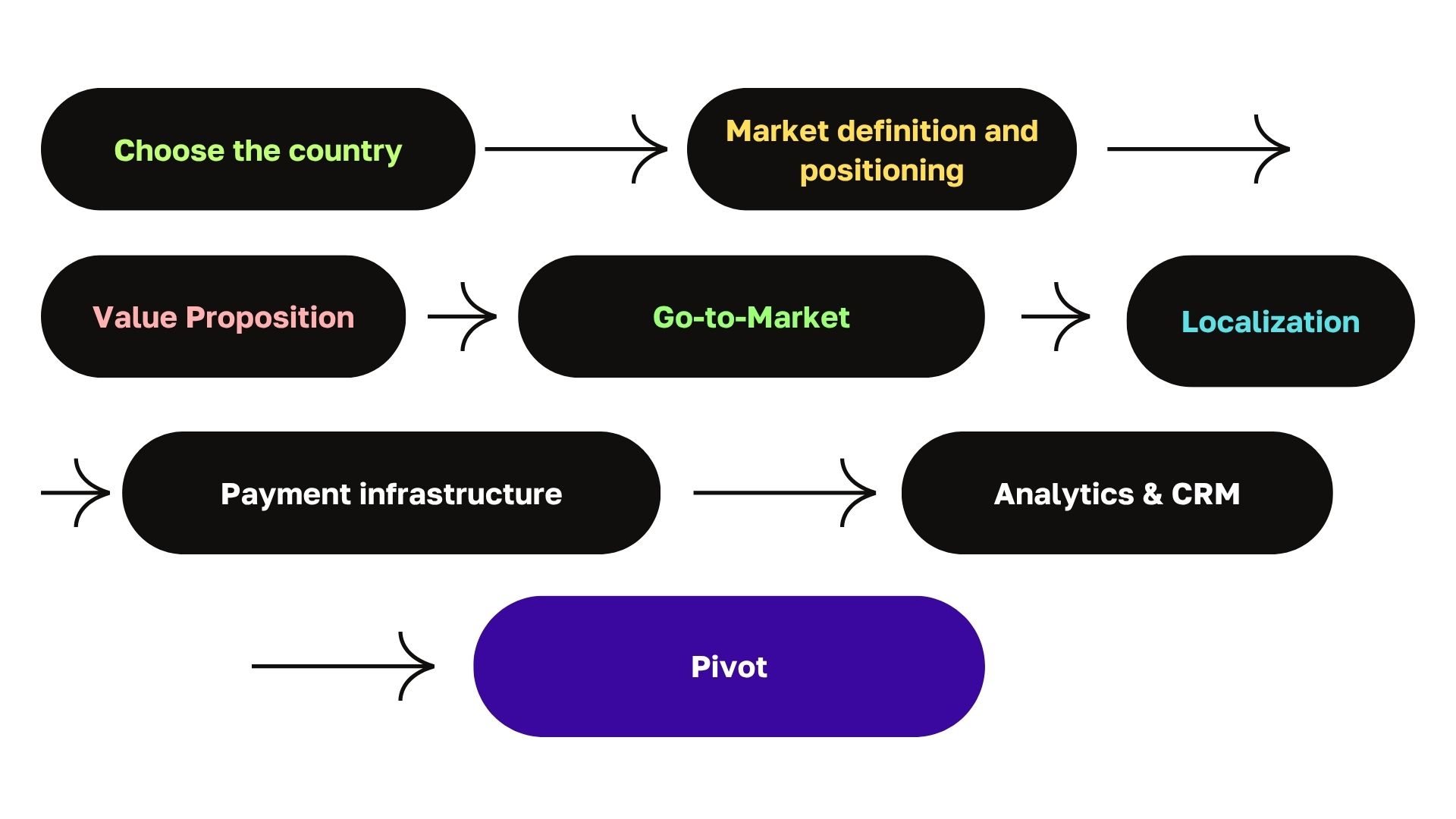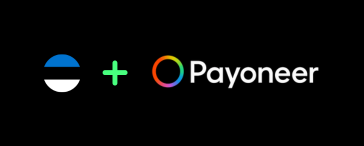



Registering a SaaS company is not just about choosing a country, it is a strategic decision. SaaS is a type of business where jurisdiction determines not only the level of tax burden, but also legal protections, scalability, access to investor capital, the ability to enter global platforms, and the final valuation of the company upon exit.
In 2024, over 70% of SaaS startups that raised more than $10 million in funding were incorporated in the US, Ireland, or the UK. This is no coincidence; these countries offer a mature legal system, stable corporate practices, clear regulations for digital services, and high trust among venture capital funds and strategic investors.
From a legal standpoint, the choice of country affects everything, from integration with Stripe and Paddle, to the ability to scale, go public, or raise the next funding round. This includes regulations such as GDPR, VAT or Sales Tax administration. Additionally, the specific industry you operate in matters. Let’s examine in detail the potential tax and legal limitations and risks:
International VAT and digital services taxes
Suppose a company sells services in the EU but is registered outside it. In that case, it is still required to register under the OSS or MOSS system, maintain separate tax accounting, and submit reports for each transaction. This leads to additional costs for accounting and legal support. Registering within an EU country streamlines this process and eliminates the need for multiple VAT registrations in different jurisdictions.
Merchant of Record (MoR) model
Some jurisdictions allow working with MoR providers (Paddle, FastSpring), who officially act as intermediary sellers between you and the customer and assume all tax and legal responsibilities. If the jurisdiction of incorporation is not suitable, access to these services may be blocked or limited.
Investment attractiveness
U.S. venture funds and private investors often work exclusively with companies incorporated as Delaware C-Corps, as this structure ensures clear corporate governance, minority shareholder protections, and flexible equity issuance instruments. European investors tend to prefer companies registered in Ireland, Estonia, or the Netherlands due to their favorable tax regimes and stable intellectual property regulations.
Regulatory restrictions and licensing
For fintech or medical SaaS products, it is critical to consider local KYC/AML requirements, data security certifications (ISO 27001, SOC 2) , and industry-specific standards (HIPAA, PSD2). Overlooking these regulations at the registration stage can complicate the launch or result in fines.
Operational flexibility and currency controls
Certain countries impose restrictions on opening foreign currency accounts, capital movement, or currency conversion. A SaaS business with global customers requires the ability to open multi-currency accounts, have legal access to international payment gateways, and make fast international transfers without currency-related barriers.
For companies planning rapid scaling and entry into markets with varying tax and regulatory requirements, it is worth considering a Double Company structure. This involves a holding company in a jurisdiction with high investment appeal (US, Ireland, UK) and an operating company in a jurisdiction with low corporate tax and simple administration (Estonia, Cyprus, Poland). This structure ensures access to venture capital and international markets while optimizing tax load and simplifying daily operational activity.
How to choose a country for registering a SaaS business?
Criterion | What to consider |
Taxes |
|
Administrative simplicity |
|
Banking and payment systems |
|
Jurisdiction reputation |
|
GDPR and other IT regulations |
|
Which countries do SaaS leaders choose?
Click on a marker to learn more about the location
Businesses targeting the European or US markets most commonly choose jurisdictions such as the U.S., United Kingdom, Cyprus, Estonia, PolandThis addresses the key objective: running a business remotely in a jurisdiction with a strong reputation and access to essential payment processing tools.
Without Stripe or Paddle, a business risks losing 50% to 70% of its customers due to the complexity or lack of trust in alternative payment methods. Additionally, in Poland, even without a local office, it is relatively easy to open an account with a traditional bank, allowing the company to hold an account in its country of registration. All of these countries allow free movement of capital, which is particularly important for businesses serving clients globally.
Taxation differs across each of the listed countries. The US is arguably the most complex in this regard, while Estonia is one of the most straightforward. However, it is important to note that companies registered in the EU have an easier path to obtaining a European VAT number and managing VAT obligations. If your primary market is Europe, having a European company will make you more relatable to your customers and automatically signal compliance with GDPR regulations.
If your priority is to attract investment into your project or to achieve a profitable exit eventually, the US is often the best fit for such goals. However, European countries also maintain a strong reputation among investors.
Country/Region | Remote management possible | Taxes | Stripe/Paddle available |
U.S. | yes | 21% (C-corp) | yes |
UK | yes | 25% | yes |
Estonia | yes | 0% (22% on distributed profits) | yes |
Poland | yes | 9% (up to €2M) | yes |
Cyprus | yes | 12,5% | yes |
Country/Region | Pros | Cons |
U.S. | Investment attractiveness | Complex accounting, high tax burden |
UK | Stability and strong reputation | High corporate tax |
Estonia | Convenience and speed, simple accounting | Less popular among investors |
Poland | Possibility to open a traditional bank account | More complex administration |
Cyprus | Low corporate tax, no dividend tax | Audit required, local director needed |
Additionally, SaaS companies often opt to register in Ireland, the UAE, Hong Kong , or other countries. Each of these jurisdictions has its own advantages and disadvantages.
Our team will be happy to provide detailed consultation on each option. In any case, we recommend starting your country selection process with a clear understanding of your business goals, structure, and target markets. Also, make sure that all the services you need are available in the selected jurisdiction.
Marketing and Go-to-Market: how to build a SaaS strategy that works from day one
Choosing a country for SaaS registration is the foundation, but real growth begins once you develop your go-to-market strategy. The legal structure and tax environment provide a solid foundation, while a well-crafted marketing strategy transforms it into a scalable business tool.

The first step is defining your market and positioning. For a SaaS product to gain traction in its target segment, you need to clearly define your Ideal Customer Profile and buyer personas: understand who your customer is, what problems they’re trying to solve, and why they’ll choose you over other options. This is not just a user description; it’s the foundation for all future communications and sales.
Next comes the value proposition: a message that resonates with your audience and clearly communicates your product’s competitive edge. It’s not just a marketing slogan; it’s also a narrative for investors, partners, and early customers.
Once positioning and UVP are defined, it’s time to choose your go-to-market channels. There is no one-size-fits-all approach: for some products, launching on Product Hunt or AppSumo will work best; for others, it's a mix of LinkedIn Ads, Google Ads, content marketing, and affiliate programs. The key is to test multiple options early on to identify which ones generate the highest engagement.
The next strategic step is localization. A SaaS operating in multiple markets must "speak" the user's language and align with their cultural and legal expectations. This includes translating the interface and website, adapting UX, and updating policies to comply with GDPR, CCPA, and industry-specific standards. Localization directly impacts conversion rates, and underestimating it is often a reason for failure in new markets.
Equally important is configuring the payment infrastructure. Stripe, Paddle, Payoneer and MoR solutions allow you to accept international payments without delays or friction for the customer. Tax automation tools like Stripe Tax or Quaderno reduce the administrative burden and minimize the risk of compliance errors.
In parallel with these steps, it's crucial to build your analytics and customer management system from day one. CRMs like HubSpot, Odoo, or Pipedrive will provide a transparent lead management process, while tools such as Mixpanel, GA4, or Amplitude will help track key metrics, user behavior, and customer lifetime value (LTV).
The final step before scaling is launching a pilot. This involves 50–100 initial users who provide feedback, test pricing plans, and validate or challenge your hypotheses around user behavior and UX. A pilot not only reveals weak points but also lays the groundwork for a scalable acquisition model.
Following this sequence, from market definition to pilot, allows a new SaaS project to go to market not just quickly, but with maximum readiness for predictable growth.
Useful services for SaaS
Aninternational payment platform that enables companies and freelancers to open corporate accounts with their own IBAN, send and receive payments globally. Used in e-commerce, freelancing, marketplaces, and SaaS to work with clients worldwide.
A cloud-based service that automates invoicing, tax compliance, and VAT/GST handling for online businesses, including SaaS companies, marketplaces, and digital goods sellers. It calculates and applies the correct tax based on the customer’s location (EU VAT, US sales tax, GST, etc.).
An international payment platform that allows businesses to accept card payments from clients in various countries. Supports Apple Pay, Google Pay, and enables automatic billing setups.
A UK-based platform for payment processing and digital product sales management that acts as a Merchant of Record (MoR). Paddle serves as the official seller to your customer and assumes full legal and tax responsibility for the transaction. You receive funds already net of taxes, without having to register for VAT or other taxes in multiple countries.
A cloud platform for subscription management and billing automation, popular among SaaS businesses and companies with recurring payments. Handles financial and administrative aspects such as invoicing, subscription billing, plan changes, seamless upgrades/downgrades, and automation of running processes (reminders, retries, etc.).
Сервіси для SaaS








